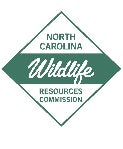Bears, Shad and bats; spring wildlife update
Published 1:56 pm Tuesday, March 22, 2022
|
Getting your Trinity Audio player ready...
|
This time of year, bears are very resourceful in finding shelter to raise their young. If you stumble upon a bear den occupied by a cub by its lonesome, the best action is to leave it alone. It’s likely waiting for its mother to return from foraging and exploring. However, sometimes cubs are orphaned, and our agency can help. If you suspect a bear cub has been abandoned, note the location, leave the cub and walk away. Once you are in a safe area, call the NC Wildlife Helpline at 866-318-2401, or contact your local district wildlife biologist for further guidance. If it’s determined a bear cub has been orphaned, we will safely transport it to a professional bear cub rehabilitator.
Shad regulations reminders
March means great Hickory Shad and American Shad fishing in North Carolina’s coastal rivers. However, harvest regulations vary depending on the river you’re fishing. The following regulations apply to inland and joint waters: Tar-Pamlico River, Pungo River, Pee Dee River, and their tributaries: Daily creel limit is 10 shad in combination. Cape Fear River and its American Shad. tributaries: Daily creel limit is 10 shad in combination with no more than 5.All other waters: Daily creel limit is 10 shad in combination with no more than 1 American Shad.
Watch for bats
If you suspect bats may be living in your home, biologists at the N.C. Wildlife Resources Commission ask that you relocate them responsibly before pup-rearing season begins on May 1. Bat scat, called guano, is the most obvious indication that bats may be living in the gable vents, behind a shutter or in another nook around the outside or inside your home. If they’re getting inside, a licensed Wildlife Control Agent can safely evict them for you. You can find a list of licensed professionals on the Wildlife Commission website.
Bats hibernate or migrate south during the winter, which is why you may only start to see them now. They are ecologically and economically valuable, providing free pest control as they nearly devour their own body weight in insects nightly. Their appetite increases even more during pup-rearing season, which runs May 1 – July 31 across North Carolina.
Eviction methods rely on a bat’s ability to fly out of the roost, then measures are taken to prevent reentry. Young bats are initially flightless and are totally dependent on their mothers, so when adult bats are evicted, the young perish because they can’t yet leave the roost or survive on their own. To make matters worse, mother bats may end up in the living space of a building trying to seek alternate ways to get to their pups. By August 1, young bats are mature enough to fly, so eviction methods are safe to resume at that point,” stated Katherine Etchison, wildlife diversity biologist with the Wildlife Commission.
If you are unable to remove bats from your home before rearing season, it is best to leave them in their roost until the end of July. However, you can still ask a Wildlife Control Agent to seal off entryways that lead into your living space to minimize the chance of human interaction. If a bat does enter your living space and human exposure occurs, or might have occurred, contact your county health department immediately.
Bats return to the same roost each spring, so it’s important to maintain your home after evicting them. You can provide alternative roosting space by installing bat boxes 12 to 20 feet high in a place with at least seven hours of direct sunlight in the summer. For tips on building, buying or installing bat boxes, visit batcon.org/about-bats/bat-houses.
If you have questions about interactions with bats, contact the Commission’s NC Wildlife Helpline, Monday through Friday, 8 a.m. – 5 p.m., at 866-318-2401 or email HWI@ncwildlife.org.






